Joi Ito
description: Japanese-American activist, entrepreneur, and venture capitalist
54 results

Whiplash: How to Survive Our Faster Future
by
Joi Ito
and
Jeff Howe
Published 6 Dec 2016
Gox’s Missing Bitcoins,” Computerworld, December 31, 2014, http://www.computerworld.com/article/2863167/police-blame-fraud-for-most-of-mt-goxs-missing-bitcoins.html. 24 “MtGox Bitcoin Chief Mark Karpeles Charged in Japan,” BBC News, September 11, 2015, http://www.bbc.com/news/business-34217495. 25 Adrian Chen, “The Underground Website Where You Can Buy Any Drug Imaginable,” Gawker, June 1, 2011, http://gawker.com/the-underground-website-where-you-can-buy-any-drug-imag-30818160. 26 Sarah Jeong, “The DHS Agent Who Infiltrated Silk Road to Take Down Its Kingpin,” Forbes, January 14, 2015, http://www.forbes.com/sites/sarahjeong/2015/01/14/the-dhs-agent-who-infiltrated-silk-road-to-take-down-its-kingpin/#6250111369dd. 27 Andy Greenberg, “Silk Road Mastermind Ross Ulbricht Convicted of All 7 Charges,” WIRED, February 4, 2015, https://www.wired.com/2015/02/silk-road-ross-ulbricht-verdict/. 28 Riley Snyder, “California Investor Wins Federal Government’s Bitcoin Auction,” Los Angeles Times, July 2, 2014, http://www.latimes.com/business/technology/la-fi-tn-bitcoin-auction-20140702-story.html. 29 John Biggs, “US Marshals to Sell 44,000 BTC at Auction in November,” TechCrunch, October 5, 2015, http://social.techcrunch.com/2015/10/05/us-marshals-to-sell-44000-btc-at-auction-in-november/. 30 “FAQ—Bitcoin,” Bitcoin.org, accessed May 29, 2016, https://bitcoin.org/en/faq. 31 Eric Hughes, “A Cypherpunk’s Manifesto,” Electronic Frontier Foundation, March 9, 1993, https://w2.eff.org/Privacy/Crypto/Crypto_misc/cypherpunk.manifesto. 32 Joichi Ito, “Shenzhen Trip Report—Visiting the World’s Manufacturing Ecosystem,” Joi Ito’s Web, September 1, 2014, http://joi.ito.com/weblog/2014/09/01/shenzhen-trip-r.html. 33 “Phantom Series—Intelligent Drones,” DJI, http://www.dji.com/products/phantom. 34 “The World’s First and Largest Hardware Accelerator,” HAX, https://hax.co/. Chapter 5: Disobedience over Compliance 1 David A. Hounshell and John Kenly Smith, Science and Corporate Strategy: Du Pont R and D, 1902–1980 (Cambridge University Press, 1988). 2 Pap Ndiaye, Nylon and Bombs: DuPont and the March of Modern America (Baltimore: JHU Press, 2007). 3 Hounshell and Smith, Science and Corporate Strategy. 4 Ibid. 5 Gerard Colby, Du Pont: Behind the Nylon Curtain (Englewood Cliffs, NJ: Prentice-Hall [1974], 1974). 6 Hounshell and Smith, Science and Corporate Strategy. 7 “Wallace Carothers and the Development of Nylon: National Historic Chemical Landmark,” American Chemical Society, n.d., http://www.acs.org/content/acs/en/education/whatischemistry/landmarks/carotherspolymers.html. 8 Thomas S.
…
When I was interviewing Iyad for the faculty position he now holds, he said that he was inspired by both the success and failure of the emergent democracy movement, and remains committed to building the tools for scalable cooperation to advance new forms of democracy. I look forward to working with Iyad and others in a concerted effort to push the pendulum back in the other direction and show that the arc of the Internet can indeed bend toward justice. —Joi Ito 2 Pull over Push The Pacific Plate is something of a sprinter, as far as geological bodies go. Every year it moves three and a half inches in a northwesterly direction. About a hundred miles off the coast of Japan, this giant slab of oceanic crust rams into the far slower Okhotsk Plate, sliding beneath it in a process geologists call subduction.
…
You need a portfolio of interests and the ability to quickly respond to both opportunities and threats as they emerge. Focusing too much on the past—or the future—narrows your vision and makes you less able to respond to changes, opportunities, and threats. In many ways, it is like Zen or martial arts training that requires dedication and an open mind. —Joi Ito 3 Compasses over Maps Zach, a boy living in the suburbs of New York City, views algorithms as a kind of compass. His ability to see the hidden patterns that make the world work is a talent he picked up a few years ago, a talent that has become one of the organizing principles of the twenty-first century: A great many of the objects in our life, exceptional and mundane, obey a precise set of instructions that determine their behavior.
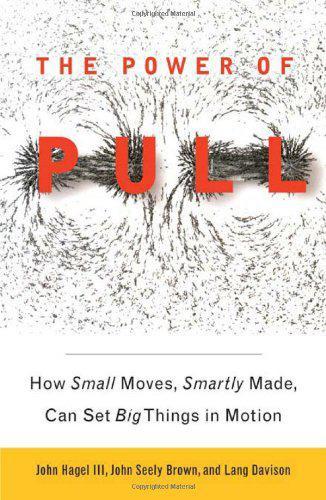
The Power of Pull: How Small Moves, Smartly Made, Can Set Big Things in Motion
by
John Hagel Iii
and
John Seely Brown
Published 12 Apr 2010
But they are, on the other hand, more frequent than face-to-face interactions, and the combination of photo sharing (of our children, perhaps, or our motorcycle vacation through the Smoky Mountains), link publishing (to that new article in The Atlantic or to the YouTube video of that presentation you gave at last week’s conference), e-mail, and chat is a far richer, more efficient way of keeping up with friends, acquaintances, and colleagues than previously less-integrated digital methods such as e-mail and instant messaging (IM), which were silo’d and one-to-one rather than one-to-many. Relative to nondigital technology like pen and paper, and to related networks like the postal or telephone system, maintaining social relationships with these new technologies is far easier. The story of how Joi Ito united a diverse group of technologists and human rights advocates, all of whom he knew personally, indicates just how useful and efficient these digitally integrated methods can be—as, indeed, does the use of Twitter by Iranian citizens to organize themselves in the face of oppression. As the number of people we can connect with expands, our ability to pull from that network the resources and people we require to address unexpected needs expands along with it.
…
Search engines are rapidly deepening their capabilities, and knowing how to narrow the search with key terms can help. Meanwhile, we can supplement these broad search capabilities with our own social networks to find what we need when we need it. This is the first level of pull, as shown in the diagram on the next page. Joi Ito experienced this principle firsthand not long ago while traveling. Joi, as it happens, is about as experienced a traveler as they come. In his multiple roles as successful entrepreneur, adviser to big companies, angel investor, gamer, guild leader, and CEO of Creative Commons, Joi is rarely in one place for more than three days at a time.
…
People were born in a specific geography and, with few exceptions, lived there throughout their lives. As transportation costs and travel times steadily declined, people began to move more freely, and today many of us live in a number of different places over the course of our lives. Some of us, such as Yossi Vardi and Joi Ito, have become perpetual nomads, moving restlessly from one city to the next, rarely stopping long enough to catch our breath, much less settle in. In an interesting reversal, an increasing number of people appear to be reverting to the hunter-gatherer lifestyle of our distant ancestors. Only this time, rather than limiting themselves to one forest or even continent, this new generation of hunter-gatherers operates on a global scale.

Exponential Organizations: Why New Organizations Are Ten Times Better, Faster, and Cheaper Than Yours (And What to Do About It)
by
Salim Ismail
and
Yuri van Geest
Published 17 Oct 2014
Only enterprises that plan for this new reality will have a chance at long-term success. Now that we have finished describing the characteristics of ExOs and their implications, we can look at the how an ExO maps onto other constructs. The following table compares ExO Attributes with Joi Ito’s MIT Media Lab Principles and the heuristics in Nassim Taleb’s Anti-Fragile theory. Joi Ito (MIT Medialab) Nassim Taleb (Anti-Fragile Theory) MTP Pull over push Compasses over maps Focus on the long term, not just the financials and short term Staff on Demand Resilience over strength Stay small and flexible Community & Crowd Systems (ecosystems) over objects Resilience over strength Build in options Stay small and flexible Algorithms - Build in stressors > Simplify and Automate Heuristics (skin in the game, orthogonal) Leased Assets Resilience over strength Reduce dependency and IT; stay small and flexible Invest in R&D Invest in data and social infrastructure Engagement (IC, gamify) Pull over push Build in options Heuristics: skin in the game Interfaces - Simplify and Automate Overcome cognitive biases Dashboard Learning over financial Simplify and Automate Short feedback loops Rewards only after project completion Experimentation Practice over theory Risk over safety Learning over education Diversify Build in hacking and stressors by yourself (fail fast and often; Netflix case w/ Chaos Monkey), especially in good times Build in options Risk over safety (not risk insensitivity) Avoid too much focus on efficiency, control and optimization Autonomy Emergence over authority Disobedience over compliance Decentralization Do not overregulate Challenge senior management Compartmentalize Share ownership within ExO on the edges (skin in the game) Social Technologies Emergence (peer-to-peer learning) over authority Build in stressors How Exponential is Your Organization?
…
Until recently, however, incentive programs have rarely been used to motivate creativity and productivity within communities and crowds. Another positive side effect of engagement, particularly when it comes to gamification, is training. The complexity of some of today’s games provides an excellent education in leadership and teamwork skills. In fact, Joi Ito has observed that becoming an effective World of Warcraft guild master is tantamount to a total-immersion course in leadership. Indeed, what might seem like the least serious tool in a company’s user and employee engagement program often proves to be one of its most powerful in terms of finding and training the individuals it needs to reach the next level.
…
The Branson group now consists of more than four hundred companies, all operating independently. Collectively, they are worth $24 billion. As Peter Diamandis has often noted, one key advantage of a small team is that it can take on much bigger risks than a large one can. This can be seen clearly in the graph below—courtesy of Joi Ito, director of the MIT Media Lab—which shows how startups are characterized by high upside potential and low downside, while large organizations are characterized by just the opposite. In healthcare, we currently have no solution for the new strains of antibiotic-resistant superbugs showing up in hospitals, which the World Health Organization considers an existential threat as we enter the post-antibiotic era.

Here Comes Everybody: The Power of Organizing Without Organizations
by
Clay Shirky
Published 28 Feb 2008
Perhaps the most significant effect of our new tools, though, lies in the increased leverage they give the most connected people. The tightness of a large social network comes less from increasing the number of connections that the average member of the network can support than from increasing the number of connections that the most connected people can support. Bridging Capital, 24/7 Joi Ito is variously an investor, a writer, a hardcore gamer, and a member of the board of scores of companies and nonprofits. His address book contains several thousand names. He is on the road constantly; in 2005 he traveled so much that his average speed was fifty miles per hour for that year. Ito is also an inveterate adopter of new technologies; he tries a remarkable number of social and organizational tools every year and sticks with the ones that make sense to him.
…
In 2004, Ito set up an IRC channel called #joiito, where his friends and contacts could congregate and talk. It was meant to be, as he puts it, “not my place, but a semipublic place, where I could be a host.” He used his name both because he is recognized in so many communities (this isn’t vanity, just observation—a Web search for “Joi Ito” brings up nearly a million results) and because he wanted to be able to exert some sort of moral suasion over the proceedings. If the IRC channel bore his name, he had a better chance of enforcing civil behavior. The channel quickly grew to have a hundred or so people logged in at the same time.
…
The existence of the channel allows Joi to create a persistent environment where people who know him can meet one another, even if he is not present. Once the channel achieved a kind of social stability, he logged in less and less often; there are people on #joiito around the clock and around the world who do not need a lot of Joi Ito to make it happen. (Dodgeball similarly relies on its users’ social capital to help broker introductions without requiring that they be present.) In this way #joiito is an instantiation of Joi’s role as a connector; if everyone were to start their own IRC channel, no one would ever talk to anyone else, as they’d all be in their own solo spaces.

Artificial Unintelligence: How Computers Misunderstand the World
by
Meredith Broussard
Published 19 Apr 2018
However, it would not lead to an economic payday. The hope of a big payout is behind a great deal of the hype behind self-driving cars. Few investors are willing to give up this hope. The economics of self-driving cars may come down to public perception. In a 2016 conversation between President Barack Obama and MIT Media Lab director Joi Ito, which was published in Wired, the two men talked about the future of autonomous vehicles.25 “The technology is essentially here,” Obama said. We have machines that can make a bunch of quick decisions that could drastically reduce traffic fatalities, drastically improve the efficiency of our transportation grid, and help solve things like carbon emissions that are causing the warming of the planet.
…
The Fairness and Transparency in Machine Learning conference and community is a leader in this area.5 Meanwhile, Harvard professor Latanya Sweeney’s Data Privacy Lab at the Harvard University Institute for Quantitative Social Science is doing groundbreaking work in understanding potential violations of privacy in large data sets, especially medical data. The lab’s goal is to create technology and policy “with guarantees of privacy protection while allowing society to collect and share private (or sensitive) information for many worthy purposes.”6 Also in Cambridge, the MIT Media Lab under director Joi Ito is doing admirable work to change the narrative about racial and ethnic diversity in computer science and to start interrogating systems. Prompted by MIT graduate student Karthik Dinakar’s work on human-in-the-loop systems, MIT Media Lab professor Iyad Rahwan has begun working on what he calls society-in-the-loop machine learning, which he hopes to use to explicitly articulate moral concerns (like the trolley problem) in AI.
…
“Artificial Intelligence’s White Guy Problem.” New York Times, June 26, 2016. https://www.nytimes.com/2016/06/26/opinion/sunday/artificial-intelligences-white-guy-problem.html. Dadich, Scott. “Barack Obama Talks AI, Robo Cars, and the Future of the World.” Wired, November 2016. https://www.wired.com/2016/10/president-obama-mit-joi-ito-interview/. Daniel, Anna, and Terry Flew. “The Guardian Reportage of the UK MP Expenses Scandal: A Case Study of Computational Journalism.” In Communications Policy and Research Forum 2010, November 15–16, 2010. https://www.researchgate.net/publication/279424256_The_Guardian_Reportage_of_the_UK_MP_Expenses_Scandal_A_Case_Study_of_Computational_Journalism.

The Perfect Thing: How the iPod Shuffles Commerce, Culture, and Coolness
by
Steven Levy
Published 23 Oct 2006
R Dutton, 1986); John Nathan, Sony: The Private Life (Boston: Houghton Mifflin, 1999); Paul du Gay, Stuart Hall, Linda Jones, High Mackay, and Keith Negus, Doing Cultural Studies: The Story of the Sony Walkman (London: Sage Publications, 1997); and Lincoln Caplan, "The Walkman," The New Yorker, September 21,1981. 115 "The shirt-pocket-portable": Michael Brian Schiffer, The Portable Radio in American Life (Tucson: University of Arizona Press, 1991). 120 "/ remember my first Walkman": Joi Ito, "My First Sony Walkman," Joi Ito Web, November 20,2004. 121 "intensely insular": Vincent Jackson, "Menace II Society," included in du Gay et al.. Doing Cultural Studies. 121 cooperating in a sociological study: Michael Bull, Sounding Out the City (Oxford: Berg, 2000). 121 "the ultimate musical means in mediating the media": Iain Chambers, "A Miniature History of the Walkman," in du Gay et al., Doing Cultural Studies.
…
Despite Moritas wishful thinking, and in spite of a raft of television commercials that showed people from disparate walks of life cozily sharing their music with dual earphones, when offered the chance to keep their music to themselves, they grabbed it. The Walkman was not about sharing, it was about not sharing. It was a me machine, an object of empowerment and liberation. "I remember my first Walkman," the venture capitalist Joi Ito wrote on his blog in 2005 (the memory was inspired by his iPod use). "It was the Sony TPS-L2.1 was in 9th grade. I had just moved to Tokyo. The Walkman was part of the coming of age,' becoming independent, asking a girl out for the first time and becoming Japanese part of my life. I remember the feeling of having music thundering in The Perfect Thing 120 my head as I walked to school.
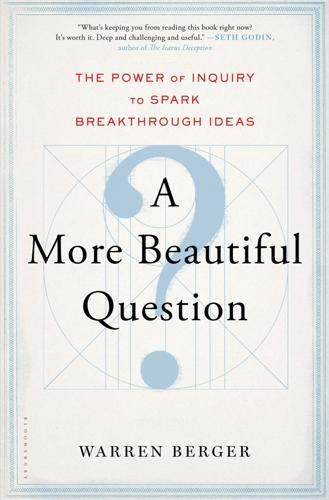
A More Beautiful Question: The Power of Inquiry to Spark Breakthrough Ideas
by
Warren Berger
Published 4 Mar 2014
Overall, there’s more darkness into which we can shine that “question flashlight.” Another way to think of it is that as we increasingly find ourselves surrounded by the new, the unfamiliar, and the unknown, we’re experiencing something not unlike early childhood. Everywhere we turn, there’s something to wonder and inquire about. MIT’s Joi Ito says that as we try to come to terms with a new reality that requires us to be lifelong learners (instead of just early-life learners), we must try to maintain or rekindle the curiosity, sense of wonder, inclination to try new things, and ability to adapt and absorb that served us so well in childhood.
…
As the children’s neurologist Stewart Mostofsky4 puts it, they have not yet developed “mental models” to categorize things, so part of what they’re doing when questioning is asking adults to help them with this huge job of categorizing what they experience around them, labeling it, putting it in the proper file drawers of the brain. When innovators talk about the virtues of beginner’s mind or neoteny, to use the term favored by MIT Media Lab’s Joi Ito, one of the desirable things they’re referring to is that state where you see things without labels, without categorization. Because once things have been labeled and filed, they become known quantities—and we don’t think about them, may not even notice them. Somewhere between ages four and five, children are ideally suited for questioning: They have gained the language skills to ask, their brains are still in an expansive, highly connective mode, and they’re seeing things without labels or assumptions.
…
When you take a look at how adults in innovative environments work, they tend to operate much like the kids in the marshmallow test. At IDEO, the firm’s designers quickly move from coming up with ideas to building and testing those ideas. The same is true at MIT Media Lab, where, as the director Joi Ito explains, the researchers and students don’t spend a lot of time wondering about the questions they’re pursuing, or debating how best to proceed. They quickly start doing what you’re supposed to do in a lab—experimenting. As Ito puts it, “These days it’s easier and less expensive to just try out your ideas than to figure out if you should try them out.”

The Truth Machine: The Blockchain and the Future of Everything
by
Paul Vigna
and
Michael J. Casey
Published 27 Feb 2018
These were important signals. With a blank canvas but also the daunting task of designing a new operating system for the global digital economy, it was vital that a group like this encourage open innovation, so that potentially disruptive new ideas weren’t constrained by threatened gatekeepers. As MIT Media Lab’s Joi Ito puts it, the online economy was not won by the closed-loop “intranets” of the early networking business—not by France Telecom’s Minitel system, or by the internal networks of AOL or Prodigy—but by the fully accessible Internet made possible by the TCP/IP pair of open protocols. The Internet’s open constitution has since been protected by an alphabet soup of global, not-for-profit bodies—albeit with some concern about their excessive power.
…
Among those deserving particular thanks are Tim’s assistant, Alice Pfeifer, who has been tremendously helpful in guiding us as we prepared the manuscript for production; Managing Editor Alan Bradshaw, who kept us on schedule; copy editor Jennifer Simington for her meticulous work; Associate Publisher Laura Clark, who has championed both of our books with SMP; and last but certainly not least, the one-two punch of publicist Katie Bassel and marketer Jason Prince. Michael My colleagues at MIT are a constant source of inspiration. They shaped much of the thinking behind this book, probably without knowing it. Special thanks go to Media Lab Director Joi Ito, Digital Currency Initiative Director Neha Narula, and my Sloan School co-lecturer Simon Johnson, as well as to Robleh Ali, Mark Weber, Tadge Dryja, Chelsea Barabas, Prema Shrikrishna, Alin Dragos, James Lovejoy, Sandy Pentland, Dazza Greenwood, Harvey Michaels, David Birnbach, and Christian Catalini.
…
This is one reason why researchers at the BOE speculated: John Barrdear and Michael Kumhoff, “Staff Working Paper No. 605: The Macroeconomics of Central Bank Issued Digital Currencies,” Bank of England, July 2016, http://www.bankofengland.co.uk/research/Documents/workingpapers/2016/swp605.pdf. Describing the technology as “an operating system for marketplaces…”: http://hyperledger.org/about. As MIT Media Lab’s Joi Ito: Ito has frequently made the comparison, including during remarks to MIT Technology Review’s “Business of Blockchain” conference, April 18, 2017. “Signing off on the press release was the easy part…”: Remarks at DTCC’s offices, Jersey City, NJ, January 28, 2016. At that same January 2016 meeting: “IBM Delivers Blockchain-as-a-Service for Developers; Commits to Making Blockchain Ready for Business,” IBM, February 16, 2016, https://www-03.ibm.com/press/us/en/pressrelease/49029.wss.

The Start-Up of You: Adapt to the Future, Invest in Yourself, and Transform Your Career
by
Reid Hoffman
and
Ben Casnocha
Published 14 Feb 2012
Often it’s when you come in contact with challenges other people find hard but you find easy that you know you’re in possession of a valuable soft asset.3 Usually, however, single assets in isolation don’t have much value. A competitive edge emerges when you combine different skills, experiences, and connections. For example, Joi Ito, a friend and head of the MIT Media Lab, was born in Japan but raised in Michigan. In his mid-twenties he moved back to Japan and set up one of the first commercial Internet service providers there. He also kept developing connections in the United States, investing in Silicon Valley start-ups like Flickr and Twitter, establishing the Japanese subsidiary for the early American blogging company Six Apart, and more recently helping to establish LinkedIn Japan.
…
You’ll also be able to connect with other professionals, also in permanent beta, who will help you move from ideas to action, from knowledge to implementation. Some of the exclusive online content includes: 1. A free PDF with advanced techniques for using LinkedIn to implement some of the strategies in this book. 2. Video interviews with Sheryl Sandberg, Mark Pincus, Joi Ito, and other top executives from different fields reflecting on their careers and sharing lessons learned. 3. An executive summary of The Start-Up of You—all the key points summarized and formatted in a way that’s easily shareable. (It makes a good “small gift” to someone in your network!) On Twitter, you can find us at @startupofyou.
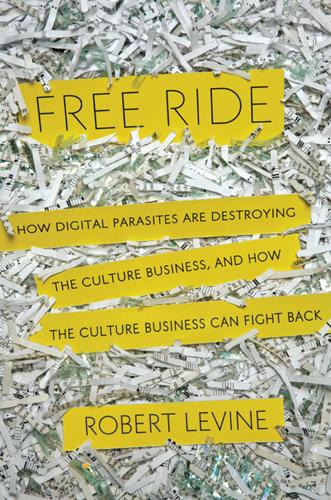
Free Ride
by
Robert Levine
Published 25 Oct 2011
That’s one reason the group’s contributors include Google, Microsoft, eBay, Best Buy, and the Consumer Electronics Association. Several of the fourteen members of Creative Commons’ board of directors have ties to businesses that would benefit from having more work free from copyright restrictions online. Glenn Otis Brown is the music business development manager at YouTube, and Caterina Fake and the chief executive, Joi Ito, were, respectively, a cofounder and an investor in Flickr, a photo-sharing start-up that used Creative Commons licenses. Esther Wojcicki, Sergey Brin’s mother-in-law, who served as the board’s chair for a year and a half before becoming vice-chair in September 2010, may not benefit directly from Google’s success, but her relative lack of experience in law and nonprofit management makes her an odd choice for the job.
…
Traffic, and income from advertising, rose accordingly. In March 2005, when Flickr was acquired by Yahoo!, reportedly for more than $30 million, the photographers received nothing.74 Most of them didn’t mind: they got free photo storage and a chance to show off their work. But it’s worth noting that Joi Ito, who runs Creative Commons, sometimes seems more excited about the investment opportunities provided by free content than about helping artists. “I think that Creative Commons will also mark an explosion of innovation that will happen on the content level,” he said in July 2010. “As an investor, for instance, I can’t invest in many of the music companies because of the risk of copyright litigation.”75 This is true enough.
…
The Digital Millennium Copyright Act doesn’t cover ad networks, and some of the sites in question aren’t in the United States. 70. Ellen Seidler, “Google-Go-Round, Profits from Pirates,” blog at PopUpPirates.com. 71. Warner Bros. Entertainment Inc. et al. v. Triton Media, LLC, No. CV-10-6318 (C.D. Cal. filed Aug. 24, 2010). 72. Ito responded to questions via e-mail. 73. Joi Ito, Hal Abelson, and Laurie Racine are on the boards of both Creative Commons and Public Knowledge. Creative Commons also has close ties with both Stanford and the Berkman Center at Harvard; of the group’s board members, Glenn Otis Brown, now at YouTube, went to Harvard Law School and taught a class with Lessig at Stanford; Eric Saltzman is the Berkman Center’s former executive director; and Molly Shaffer Van Houweling has been a fellow at both Stanford Law School and the Berkman Center. 74.

Remix: Making Art and Commerce Thrive in the Hybrid Economy
by
Lawrence Lessig
Published 2 Jan 2009
The technology watches what you listen to, “scrobbling” (meaning sending the name of the song you’re listening to) to an engine that then learns more about you 80706 i-xxiv 001-328 r4nk.indd 199 8/12/08 1:55:43 AM REMI X 200 (and people like you). That engine then enables individuals to be linked with others. But not just anonymously. Instead, the technology helps individuals link their own user pages with others, both friends and those within their musical “neighborhood.” As Japanese venture capitalist (and Last.fm investor) Joi Ito described it to me, The Last.fm community originally was, and may still be, revolving around the cleaning up of the data. So if you have titles of songs that are misspelled, or if you have an artist whose name is written differently in Japanese, there’s a whole community of people who go in and fix those ambiguities and fix the data.
…
It’s just one more window . . . and it’s not usually my best one.58 Second Life is of course not the only virtual place in which people build this sort of community. Many (perhaps most) of the most interesting virtual games have this component built in. Japanese entrepreneur and venture capitalist (and gamer) Joi Ito describes the community in perhaps the Net’s most popular game, World of Warcraft: “[T]he game emphasizes the necessity for a group. As an individual, you realize that the only way that you could create a group is by sharing and by being friendly.” This is a lesson especially important for kids. So a lot of times when young kids start playing World of Warcraft, in the beginning they’re very greedy.
…
I had a very different conception of the story this book tells, for example, until Tim O’Reilly shifted my view fundamentally. Likewise, though in differing degrees, with the other interviewees who appear throughout the book: Brian Behlendorf, Marc Brandon, Candice Breitz, Stewart Butterfield, Steve Chen, Gregg Gillis, Mark Hosier, Joi Ito, Mimi Ito, Don Joyce, Brewster Kahle, Heather Lawver, Declan McCullagh, Dave Marglin, Craig Newmark, Silvia Ochoa, Tim O’Reilly, Philip Rosedale, Mark Shuttleworth, Johan Söderberg, Victor Stone, Jimmy Wales, Jerry Yang, and Robert Young. I have learned a great deal from all of them, and I hope I have fairly evinced some of that understanding here.

New Laws of Robotics: Defending Human Expertise in the Age of AI
by
Frank Pasquale
Published 14 May 2020
Try Paying More,” Bloomberg Opinion, September 8, 2016, https://www.bloomberg.com/view/articles/2016-09-08/having-trouble-hiring-try-paying-more; Thijs van Rens, “Paying Skilled Workers More Would Create More Skilled Workers,” Harvard Business Review, May 19, 2016, https://hbr.org/2016/05/paying-skilled-workers-more-would-create-more-skilled-workers. 83. See, for example, Swiss Business Hub Japan, Healthcare Tech in Japan: A Booming Market, 2018, https://swissbiz.jp/wp-content/uploads/2018/01/sge_healthcaretech_japan_infographic.pdf. 84. Joi Ito, “Why Westerners Fear Robots and the Japanese Do Not,” Wired, July 30, 2018, https://www.wired.com/story/ideas-joi-ito-robot-overlords. 85. “Japan Is Both Obsessed With and Resistant to Robots,” Economist, November, 2018, https://www.economist.com/asia/2018/11/08/japan-is-both-obsessed-with-and-resistant-to-robots. 86. Selina Cheng, “ ‘An Insult to Life Itself’: Hayao Miyazaki Critiques an Animation Made by Artificial Intelligence,” Quartz, December 10, 2016, https://qz.com/859454/the-director-of-spirited-away-says-animation-made-by-artificial-intelligence-is-an-insult-to-life-itself/. 87.
…
There is no universal prescription here. Japanese leaders have been particularly enthusiastic about deploying technology in health care settings.83 Several commentators have argued that Shinto and Buddhist traditions make Japanese citizens more accepting of robotics and allied technology. Former MIT Media Lab director Joi Ito, for instance, discerned a deep connection between forms of animism and acceptance of robots.84 Japanese culture, however, is not monolithic, and its pluralism includes voices expressing caution about the spread of AI.85 For example, in a vivid exchange, animator Hayao Miyazaki dismissed an AI animation of a grotesquely humanoid figure: I am utterly disgusted.

How to Fix the Future: Staying Human in the Digital Age
by
Andrew Keen
Published 1 Mar 2018
What Friedman euphemistically dubs a “mismatch” between technology and humanity is, he says, “at the center of much of the turmoil roiling politics and society in both developed and developing countries today . . . [and] now constitutes probably the most important governance challenge across the globe.”7 As Joi Ito, the director of the MIT Media Lab, warns, when everything is moving quickly except us, the consequence is a social, cultural, and economic “whiplash.”8 Few people have given this asymmetry more thought than the philosopher whom Thomas Friedman acknowledges as his “teacher” in these matters, Dov Seidman, author of How and the CEO of LRN, which advises companies on ethical behavior, culture, and leadership.9, 10 Seidman reminds us that “there’s no Moore’s Law for human progress” and that “technology can’t solve moral problems.”
…
Gordon Moore didn’t himself call it Moore’s Law when he wrote his 1965 paper. His friend Carver Mead was the first to call it that, in 1975. 6. Thomas L. Friedman, Thanks You for Being Late: An Optimist’s Guide to Thriving in the Age of Acceleration (Farrar, Straus and Giroux, 2016), 27. 7. Ibid., 28. 8. Joi Ito and Jeff Howe, Whiplash: How to Survive Our Faster Future (Grand Central Publishing, 2016). 9. Friedman, Thank You for Being Late, 4. 10. Dov Seidman, “From the Knowledge Economy to the Human Economy,” Harvard Review, November 12, 2014. 11. “2017 Edelman TRUST BAROMETER Reveals Global Implosion of Trust,” Edelman.com, January 15, 2017. 12.
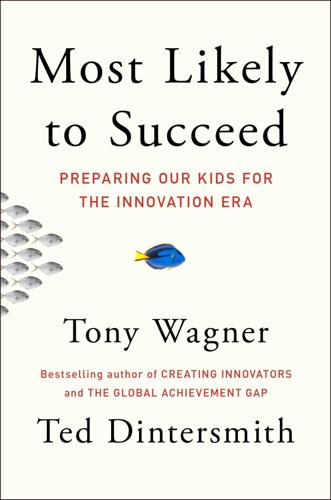
Most Likely to Succeed: Preparing Our Kids for the Innovation Era
by
Tony Wagner
and
Ted Dintersmith
Published 17 Aug 2015
A teacher who can hold the attention of students for a class period, let alone a school year, is performing a minor miracle. It’s of modest academic interest to debate whether a student is better off being lectured by a real person, by an online video, or by a blend. The real question is whether any form of lecture-based education makes sense in today’s world. And the evidence says it doesn’t. On the face of it, Joi Ito might seem an odd choice to head MIT’s Media Lab, one of our university system’s crown jewels. Ito didn’t graduate from college. He dropped out. Twice. He started at Tufts, and concluded that the way computer science was taught made no sense. He rebooted at the University of Chicago, studied physics, but concluded that the coursework was largely about memorizing formulas.
…
“College is worth it, but only if we make the most of it,” Gallup, Opinion Pages, August 14, 2014. http://www.gallup.com/opinion/gallup/176507/college-worth.aspx. 72 Busteed, Brandon. (Executive Director of Gallup Education) in discussion with the author, October 23, 2014. Chapter 6. Teaching, Learning, and Assessing 1 Ito, Joi. “A week of a student’s electrodermal activity,” Ito’s blog, April 30, 2012. http://joi.ito.com/weblog/2012/04/30/a-week-of-a-stu.html (accessed Decmber 8, 2014). 2 Khan, Salman. The One World Schoolhouse: Education Reimagined (New York: Grand Central Publishing, 2012). Kindle Edition. 1985–1989. 3 “Enough with the lecturing,” National Science Foundation Press Release 14-064, May 12, 2014. http://nsf.gov/news/news_summ.jsp?

Only Humans Need Apply: Winners and Losers in the Age of Smart Machines
by
Thomas H. Davenport
and
Julia Kirby
Published 23 May 2016
They could teach from an early age what it takes to forge an effective human–machine partnership, which has each partner effectively complementing the strengths and weaknesses of the other. Such offerings could be the contemporary version of “shop class,” in which boys learned to cut wood and metal. Our otherwise well-educated kids did not experience this in their own educations, which is unfortunate. Something Joi Ito, who heads the MIT Media Lab, said in a recent TED Talk connects well to this thought. Talking about education, he wondered why teachers continue to insist that students be able to perform certain tasks with no technological support when, in the real world for which they are being prepared, all those supports exist (primarily on the Internet or as smartphone apps).
…
An example Wenger cites is crowdfunding, which enables creative people whose ideas do not offer enough value-creation potential to make them exciting to venture capitalists, to raise funds in the form of many small contributions from ordinary folk who would just like to see their ideas realized. It’s a completely new mechanism for funding projects, and Wenger points out that it constitutes an important social innovation that was wholly conceived and built outside the government’s purview. Joi Ito of MIT mentions another one, now called Safecast, in the TED Talk we referred to earlier in this chapter—a bottom-up, volunteer-based approach to mapping the spread of radiation in Japan after the 2011 tsunami. Online education is another one, given the social benefits of having education easily accessible for free or at a very low cost that previously would have cost thousands or tens of thousands of dollars.
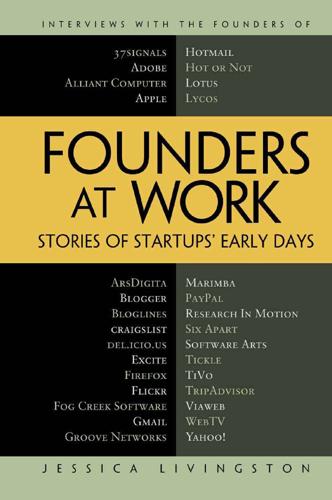
Founders at Work: Stories of Startups' Early Days
by
Jessica Livingston
Published 14 Aug 2008
Like everyone else, we thought very highly of Google, and we said, “Let’s talk about it.” Four months later, we were sitting in Google. Mind you, it wasn’t an easy decision. I struggled hard deciding if going to Google was the right thing to do. We weren’t desperate. We actually had a term sheet on the table for $1 million in investment from Joi Ito’s Neoteny (who ended up investing in Six Apart). And after 4 years of pouring my heart into Blogger, I saw a lot of risk in giving up control. Eventually I decided Google was right. I really thought we could do huge things at this point, and Google had done bigger things than most, so I wanted to get in there and learn and get those resources.
…
Trott’s personal blog, Dollarshort, was growing in popularity, and she was dissatisfied with the blogging software available at the time. So she and Ben decided to develop their own and share it with some friends. Movable Type became popular almost immediately on its launch in October 2001. In April 2003, Six Apart received funding from Joi Ito’s Neoteny. They launched their hosted service, TypePad, later that fall. In January 2005, the company announced the acquisition of Danga Interactive, the makers of LiveJournal. Six Apart launched Vox (formerly known as Comet), a hosted blogging platform with a social networking component, in 2006.
…
I actually sent those emails out with their keys up until probably January of 2004. It was a really long time. I felt that they were giving money, so I wanted to honor that and thank them. Livingston: So you’re taking donations, it’s paying the rent and keeping things moving. Did you then try to seek out VC money? 408 Founders at Work Trott: No. We never sought out money. Joi Ito contacted us because he was using the product, and he was interested. He was actually probably more interested in just talking to us about what we were doing. And then he said, “If you’re ever interested . . .” We kind of ignored him because we didn’t know what to do. We didn’t have any desire to take money.
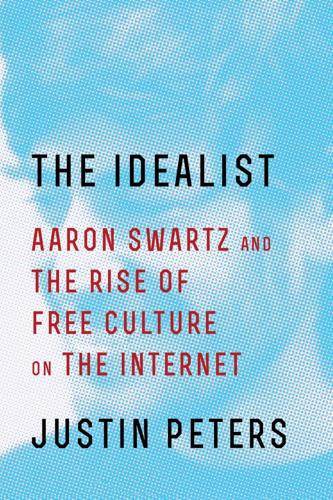
The Idealist: Aaron Swartz and the Rise of Free Culture on the Internet
by
Justin Peters
Published 11 Feb 2013
They hoped that a sympathetic public statement from the school might dissuade the US attorneys from bringing a case. At the least, such a statement would hamper the prosecutors’ efforts to argue in court that Swartz had caused grave harm to any of the parties involved. On June 13, 2011, Robert Swartz asked Joi Ito, the incoming director of the MIT Media Lab, if he would be willing to intervene on Aaron’s behalf with the MIT administration. Ito obliged. “I wonder if there is any way that MIT might consider this a ‘family matter’ and consider helping to try to limit the extent of the punishment and at least prevent Aaron from going to prison on a felony charge,” Ito wrote to the school’s Office of the General Counsel.
…
Between May and August 2012, Swartz’s attorneys contacted the institute’s outside counsel thirteen separate times to request a meeting with MIT officials, in hopes of convincing them to issue a public statement that could be used on Swartz’s behalf. MIT officials did not respond.7 With official communications blocked, Swartz’s father decided once again to convene a meeting with MIT executives through informal channels. With the help of Media Lab director Joi Ito, Robert Swartz sent a letter to MIT’s president and chancellor on August 10, 2012. “We think there are both legal and non-legal issues that you are not aware of and urgently ask for a meeting,” he wrote. “The urgency of the meeting is due to the fact that the prosecutor has given us a deadline of Wednesday [August 15] to resolve the case or go to trial and we have a meeting Monday with the head of the criminal division that requires hard decisions.”8 The letter was an epistolary kowtow.

Future Crimes: Everything Is Connected, Everyone Is Vulnerable and What We Can Do About It
by
Marc Goodman
Published 24 Feb 2015
As a consequence of the power of embedded computing, we will see “billions of smart, connected ‘things’ ” joining a global neural network in the cloud that “will encompass every aspect of our lives.” While the “old” Internet allowed desktops, laptops, and servers to share information, the “new” Internet will make it possible to remotely control any object on earth. As Joi Ito, director of the MIT Media Lab, explains, there is a “phenomenon of convergence, where bits from the digital realm are fusing with atoms here in the physical world.” Every object will have an identity and a life in both the physical and the virtual worlds, and when this happens, the difference between online and off-line, previously a meaningful distinction, goes away.
…
Robots are computers, automated systems that can reach beyond the purely two-dimensional digital plane of their ancestors in order to touch, influence, and interact with the corporeal world that surrounds them. Most can be remotely controlled over the Internet and via smart-phone apps, leading to legions of robots joining the Internet of Things. The implications are momentous. As Joi Ito, director of MIT’s Media Lab, has observed, we are living in a period of convergence, a time “where bits from the digital realm are fusing with atoms here in the physical world.” Robots are entering our three-dimensional space—space that they will share with us. Like all objects connected to the IoT, robots are subject to hacking, though the consequences may be much more far-reaching.
…
The legendary geneticist, molecular engineer, and Harvard professor George Church has concluded that “about four grams of DNA theoretically could store the digital data humankind creates in one year.” Not only do such storage techniques vastly outlast magnetic media by a few hundred thousand years (we can still read dinosaur DNA), but they are more than a million times denser than today’s electronic storage technologies. As a result, Joi Ito of MIT’s Media Lab has predicted that our technological universe will expand beyond the Internet of Things to include an Internet of microbes, networks of biological things that can communicate with each other and with us. Indeed, synbio promises a host of tremendous breakthroughs and benefits for our society, and the work is only just beginning.
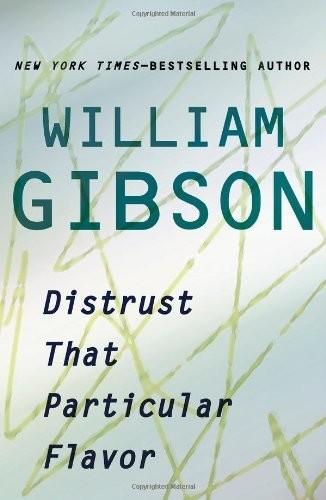
Distrust That Particular Flavor
by
William Gibson
Published 3 Jan 2012
I actually feel I shouldn’t have to. It’s like being asked to explain why London fascinates me. Who asks a question like that? Were Japanese girls the first power texters? They were the first I encountered. I saw my first fax machine in Tokyo. Katsuhiro Otomo had several in his house, when he was making Akira. Joi Ito and his friends, in Tokyo, were the first people I saw using those tiny little newfangled cellphones to coordinate smoothly frenetic urban evenings. A fashionably dressed man in Floral Street, outside Paul Smith, was the first headset-equipped cellphone user I ever mistook for a talkative madman.

Smart Cities: Big Data, Civic Hackers, and the Quest for a New Utopia
by
Anthony M. Townsend
Published 29 Sep 2013
The Internet is a case in point, contrasting these two views on the nature of technological innovation. In the 1970s, telecommunications companies and academic computer scientists battled over the design of the future Internet. Industry engineers backed X.25, a complex scheme for routing data across computer networks. The computer scientists favored a simpler, collaborative, ad hoc approach. As Joi Ito, director of the MIT Media Lab, describes it: The battle between X.25 and the Internet was the battle between heavily funded, government backed experts and a loosely organized group of researchers and entrepreneurs. The X.25 people were trying to plan and anticipate every possible problem and application.
…
Norton, Fighting Traffic: The Dawn of the Motor Age in the American City (Cambridge, MA: MIT Press, 2008), 25. 12Duffus, “A Rising Tide of Traffic Rolls Over New York,” XX4. 13Norton, Fighting Traffic, 25–27. 14Norton, Fighting Traffic, 24. 15Norton, Fighting Traffic, 105. 16Norton, Fighting Traffic, 2. 17Campanella, “Jane Jacobs and the Death and Life of American Planning.” 18Anthony Flint, Wrestling with Moses: How Jane Jacobs Took on New York’s Master Builder and Transformed the American City (New York: Random House, 2009), 51. 19Author’s calculation using estimates from Caro, The Power Broker, 9, and US Bureau of Labor Statistics CPI Inflation Calculator, http://www.bls.gov/cpi/cpicalc.htm, accessed August 15, 2012. 20Flint, Wrestling with Moses, 85–87. 21Flint, Wrestling with Moses, 100. 22Flint, Wrestling with Moses, 105. 23Flint, Wrestling with Moses, 99. 24Flint, Wrestling with Moses, 109. 25Campanella, “Jane Jacobs and the Death and Life of American Planning.” 26Tom Wright, remarks, “Tools for Engagement” workshop, Regional Plan Association & Lincoln Institute for Land Policy, New York, March 29, 2012. 27Patrick Geddes, quoted in Jaqueline Tyrwhitt, ed., Patrick Geddes in India (London: Lund Humphries: 1947), 45. 28Helen Meller, Patrick Geddes: Social Evolutionist and City Planner (New York: Routledge, 1990), 76–79. 29Patrick Geddes, quoted in Tyrwhitt, ed., Patrick Geddes in India, 41 30Alasdair Geddes, quoted in Tyrwhitt, ed., Patrick Geddes in India, 15. 31Lewis Mumford, quoted in in Tyrwhitt, ed., Patrick Geddes in India, 11. 32Quoted in Welter, Biopolis, 18. 33Nicolai Ouroussoff, “Outgrowing Jane Jacobs and Her New York, New York Times, April 30, 2006, http://www,nytimes.com/2006/04/30/weekinreview/30jacobs.html. 34Campanella, “Jane Jacobs and the Death and Life of American Planning.” 35Fareed Zakaria, “Special Address: At the Intersection of Globalization and Urbanization,” SmarterCities Forum, Rio de Janeiro, Brazil, November 9, 2011. 36Tyler Cowen, The Great Stagnation: How America Ate All The Low-Hanging Fruit of Modern History, Got Sick, and Will (Eventually) Feel Better (New York: Dutton, 2011), Kindle edition, location 93. 37“Hal Varian on How the Web Challenges Managers,” video interview with James Manyika, McKinsey & Co., last modified January 2009, http://www.mckinseyquarterly.com/Hal_Varian_on_how_the_Web_challenges_ managers_2286. 38Joi Ito, “The Internet, innovation and learning,” last modified December 5, 2011, http://joi.ito.com/weblog/2011/12/05/the-internet-in.html. 39Ito, “The Internet, innovation and learning.” 40Michael Hiltzik, “So, who really did invent the Internet?” Los Angeles Times, last modified July 23, 2012, http://www.latimes.com/business/money/la-mo-who-invented-internet-20120723,0,5052169.story. 41Bernard Rudofsky, Architecture Without Architects (Albuquerque: University of New Mexico Press, 1987). 42Gary Wolf, “Exploring the Unmaterial World,” Wired, 2000, 306–19. 43Gene Becker, “Prada Epicenter Revisited,” Fred’s House, blog, last modified April 4, 2004, http://www.fredshouse.net/archive/000159.html. 44Adam Greenfield, Everyware: The Dawning Age of Ubiquitous Computing (Berkeley, CA: New Riders, 2006), 179. 45M.
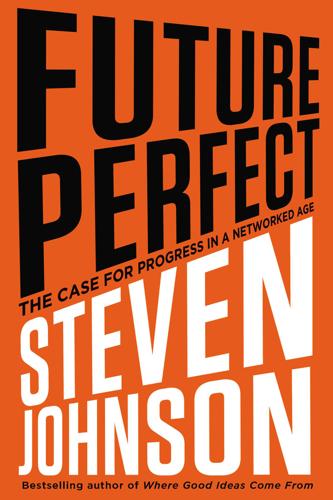
Future Perfect: The Case for Progress in a Networked Age
by
Steven Johnson
Published 14 Jul 2012
That is a future worth looking forward to. Now is the time to invent it. Acknowledgments Appropriately enough, this book is itself the product of a peer network of support and collaboration that extends back more than a decade. Shortly after my 2001 book Emergence was published, my friend Joi Ito posted a few open-ended musings online about what the decentralized networks of emergence might mean for the future of politics and democracy—sparking a conversation that ultimately produced a book of essays called Extreme Democracy. At the same time, my friend Kurt Andersen remarked that he wished Emergence had explored the social and economic implications of the theories I was describing.
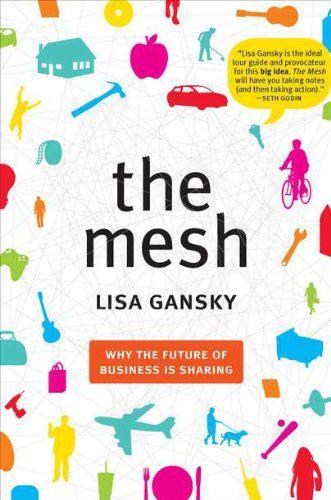
The Mesh: Why the Future of Business Is Sharing
by
Lisa Gansky
Published 14 Oct 2010
I so appreciate your time, candor, curiosity, friendship, and openness. Luis Sota, Todd Lash, Peter Schwartz, Eamonn Kelly, Maria Guidice, Nancy Murphy, Chris Anderson, Sunny Bates, Christie Dames, Kevin O’Malley, Juan Enriquez, Jacqueline Novogratz, Ethan Beard, Joel Makower, Laurie Coots, Shawn Gensch, Mitchell Baker, Chris Beard, John Lilly, Joi Ito, Denise Caruso, and Lisa Minucci all contributed to my thinking, reshaping, and concern for sharing The Mesh effectively and well. Thank you for your time, insights, and support. To my team at Portfolio, you are, as A.Z. would say, “the bomb”! Thanks for the dedication, alacrity, vision, tenacity, and partnership.
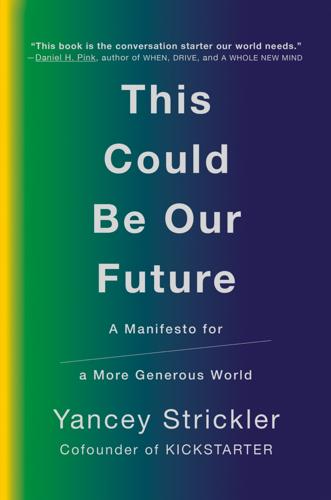
This Could Be Our Future: A Manifesto for a More Generous World
by
Yancey Strickler
Published 29 Oct 2019
Thank you to the rest of my New York family, including Kendel and Adam Shore, Bridget and Charles Best, Laurence Carty and Paola Antonelli, Lena Iwamura, Agnieszka Kurant, Michal Rosen, Anthony Volodkin, Josh Stylman, Peter Hershberg, Alan Del Rio Ortiz, CJ Anderson, Pete Fritz, Ed Coleman, Greg Costello, Maureen Hoban, Jamin Warren, Jess Phelps, Jesse Ball, Qanta Shimizu, Doug Sherrard, and Liz Cook. Also thanks to Jerry Colonna, Chad Dickerson, Patrick Collison, Ev Williams, Andy Baio, Sunny Bates, Tina Roth Eisenberg, Lance Ivy, Hope Hall, Jeff Hammerbacher, Tim O’Reilly, Jess Search, Jennifer Pahlka, Joi Ito, Karin Chien, Keri Putnam, Luis Von Ahn, Max Temkin, Deray McKeesson, Lawrence Lessig, Daryl Morey, Tyler Cowen, and Thaniya Keerepart. To my Echo Park family, Trish and Tony Unruh, Lucien Unruh, Rohan Ali, Alexa Meade, Anna Bulbrook, and Sadye Henson, thank you for making us feel so at home. To the 29 Palms Inn, thank you for always being a place of inspiration and solace.

The Alignment Problem: Machine Learning and Human Values
by
Brian Christian
Published 5 Oct 2020
See New York Consolidated Laws, Executive Law – EXC § 259-c: “State board of parole; functions, powers and duties.” 16. “New York’s Broken Parole System.” 17. “A Chance to Fix Parole in New York.” 18. Smith, “In Wisconsin, a Backlash Against Using Data to Foretell Defendants’ Futures.” 19. “Quantifying Forgiveness: MLTalks with Julia Angwin and Joi Ito,” https://www.youtube.com/watch?v=qjmkTGfu9Lk. Regarding Steve Jobs, see Eric Johnson, “It May Be ‘Data Journalism,’ but Julia Angwin’s New Site the Markup Is Nothing Like FiveThirtyEight,” https://www.recode.net/2018/9/27/17908798/julia-angwin-markup-jeff-larson-craig-newmark-data-investigative-journalism-peter-kafka-podcast. 20.
…
“Learning with Augmented Class by Exploiting Unlabeled Data.” In Twenty-Eighth AAAI Conference on Artificial Intelligence, 1760–66, 2014. Dabkowski, Piotr, and Yarin Gal. “Real Time Image Saliency for Black Box Classifiers.” In Advances in Neural Information Processing Systems, 6967–76, 2017. Dadich, Scott, Joi Ito, and Barack Obama. “Barack Obama, Neural Nets, Self-Driving Cars, and the Future of the World.” Wired, October 12, 2016. Dana, Jason, and Robyn M. Dawes. “The Superiority of Simple Alternatives to Regression for Social Science Predictions.” Journal of Educational and Behavioral Statistics 29, no. 3 (2004): 317–31.
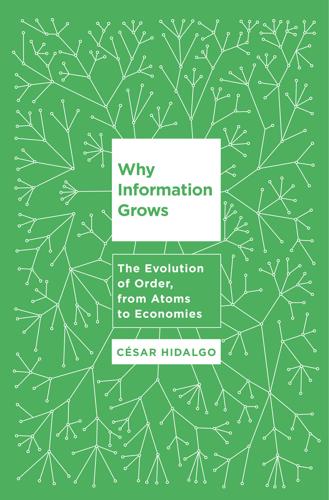
Why Information Grows: The Evolution of Order, From Atoms to Economies
by
Cesar Hidalgo
Published 1 Jun 2015
PART III The Quantization of Knowhow In 2013 Josep Guardiola, the former coach of Barcelona and current coach of Bayern Munich, visited the MIT Media Lab. Guardiola—or Pep, as he is informally known—had accepted an invitation to visit MIT from his friend and MIT’s treasurer, Israel Ruiz. After some emails involving Israel, Joi Ito, and me, I was put in charge of preparing for Pep’s visit, a responsibility that I accepted happily. Pep’s visit was easy to organize. Students from my group and other groups at the Media Lab were excited to present their work to the soccer celebrity. Yet, since students from other departments also wanted to meet him, I decided to organize a short Q&A session.
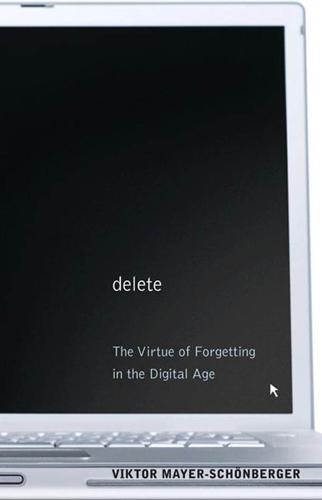
Delete: The Virtue of Forgetting in the Digital Age
by
Viktor Mayer-Schönberger
Published 1 Jan 2009
We may enter a time in which—as a reaction to too much remembering, with too strict and unforgiving a link to our past—some may opt for the extreme and ignore the past altogether for the present, deciding to live just in the moment. This may sound more far-fetched than it actually is. Take the culture of short messaging (SMSing). Most of the messages sent back and forth (much like one’s status on Facebook) are, as Internet entrepreneur Joi Ito reminded me, not intended to communicate something about the past or the future, but are solely about the present: this is where I am; this is what I do. These messages are intentionally ephemeral, capturing the fleeting moment that is now, nothing beyond. At least to some extent this may be how the digital generation responds to digital remembering.

The New Nomads: How the Migration Revolution Is Making the World a Better Place
by
Felix Marquardt
Published 7 Jul 2021
I would also like to extend my sincere thanks to the nomads I met and interviewed in the process of researching this book, many of them at length, for their precious time and invaluable insights: Habib Kazdaghli; Alhaji Siraj Bah; Farzad Ban; Alia Wingstedt; Max Karlsson; Niall Saville; Emmanuella Zandi; Ankit Desai; Tania Beard; Paola Audrey; Ciku Kimeria; Jan H. Christiansen; Miguel Jonsson; Catherine Mayer; Alok Alström; Arnaud Castaignet; Gwamaka Kifukwe; Karoli Hindriks; Aida Hadžialic; Ibrahima Tounkara; Ben Sock; Yeb Saño; Greta Thunberg; Vic Barrett; Sani Tahir; Vybarr Cregan-Reid; presidents Kersti Kaljulaid and José Ramos-Horta; Joi Ito; Guyonne de Montjou; Max Ajl; Lu Gigliotti; Ramazan Nanayev; Julien Rochedy; Sigurlína Ingvarsdóttir, Peter Smith, Nic Cary and Xen Herd; Kevin Anderson and Keri Facer; Nasita Fofana; Ays¸em Mert; Gareth Dale; Anjuli Pandit; Silja Voolma; Philippe Douste-Blazy; Lauren Proctor; Phoebe Tickell; Lennart Olsson; Stan Cox, Bryan Thompson, Pheonah Nabukalu and Fred Iutzi at the Land Institute; Sohnia van der Puye; Ilse van der Velden; Ben Anderson; Spencer Wells; Glenn Chisholm; Beta Grétarsdóttir; Eva Vlaardingerbroek; Efua Oyofo; Muyabwa Moza; Harper Reed; Anna-Hope Kabongo; Karim Sy and Keita Stephenson; Niki Jaiswal; Sophia Rashad; Matt Yanchyshyn; Matteo De Vos; Patrick Chadwick; Monika Karapetian; Nour Sharara; Gordon Cyrus; Paul da Silva; Asad Hussein; Assa Traoré; Noura Berrouba; Rabbi Stephen Berkowitz; and last but not least Franco Rivas.
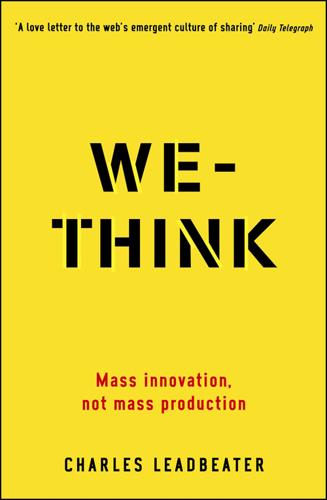
We-Think: Mass Innovation, Not Mass Production
by
Charles Leadbeater
Published 9 Dec 2010
World of Warcraft was designed to be social and participative. Many tasks are too complex to be undertaken alone, putting a premium on collaboration among characters with complementary abilities. Soon after the game was launched, guilds started to form. Some, like the one founded by the Japanese Internet venture capitalist Joi Ito, have thousands of members and are like mini-societies with their own websites and private lore. Others have only a handful of casual members. Yet World of Warcraft is not a collaboration of altruistic hackers. The 8 million players pay a monthly subscription of $14.99. Extensions to the game have to be bought: the first to be released, World of Warcraft: The Burning Crusade, sold 2.4 million copies in the first 24 hours.
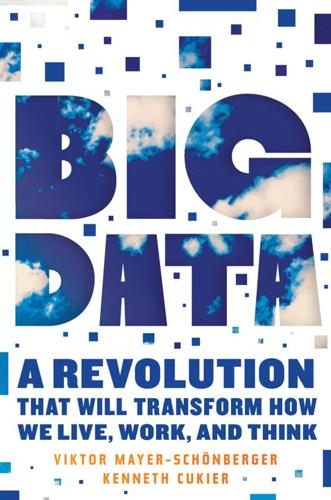
Big Data: A Revolution That Will Transform How We Live, Work, and Think
by
Viktor Mayer-Schonberger
and
Kenneth Cukier
Published 5 Mar 2013
On that note, we reserve our particular thanks to the participants over the years at the Rueschlikon Conference on Information Policy, which Viktor co-organized and where Kenn was the rapporteur. We especially thank Joseph Alhadeff, Bernard Benhamou, John Seely Brown, Herbert Burkert (who introduced us to Commodore Maury), Peter Cullen, Ed Felten, Urs Gasser, Joi Ito, Jeff Jonas, Nicklas Lundblad, Douglas Merrill, Rick Murray, Cory Ondrejka, and Paul Schwartz. VIKTOR MAYER-SCHÖNBERGER KENNETH CUKIER Oxford/London, August 2012 Index abacuses, [>] Accenture, [>], [>] accountability, individual: big data and, [>]–[>], [>] Acxiom, [>], [>] airlines Etzioni analyzes fare pricing patterns, [>]–[>], [>], [>], [>], [>], [>], [>], [>], [>] flight delay predictions, [>]–[>], [>]–[>] AirSage, [>], [>] “algorithmists,” [>]–[>] algorithms, computer, [>]–[>], [>] improvements in, [>]–[>] transparency of, [>] Alta Vista, [>] Amazon, [>], [>], [>], [>], [>], [>], [>] as big-data company, [>] book reviews at, [>]–[>], [>] collaborative filtering at, [>]–[>], [>] data-reuse by, [>], [>] and e-books, [>]–[>] Amazonia (Marcus), [>] ancient world: record-keeping in, [>]–[>] Anderson, Chris: on “end of theory,” [>]–[>] anonymization: big data defeats, [>]–[>], [>] of data, [>], [>]–[>] privacy and, [>]–[>] antitrust regulation: big data and, [>]–[>] AOL: fails to understand data-reuse, [>] releases personal data, [>]–[>] Apple, [>], [>] and cell phone data, [>] Arabic numerals, [>]–[>] Arnold, Thelma, [>]–[>] artificial intelligence: big data and, [>]–[>] at Google, [>] Asthmapolis, [>] astronomy: big data in, [>] automobiles: anti-theft systems, [>] data-gathering by, [>]–[>], [>]–[>], [>], [>], [>]–[>] automobiles, electric: big data and, [>]–[>] IBM and, [>]–[>] automobiles, self-driving, [>], [>], [>], [>] Aviva, [>]–[>] Ayres, Ian: Super Crunchers, [>] Bacon, Francis, [>] Banko, Michele, [>], [>] Barabási, Albert-László, [>]–[>] Barnes & Noble, [>]–[>] Basis, [>] Beane, Billy, [>]–[>] Being Digital (Negroponte), [>] Bell Labs, [>] Berners-Lee, Tim, [>] Bezos, Jeff, [>], [>], [>], [>] big data.

The Internet Is Not the Answer
by
Andrew Keen
Published 5 Jan 2015
Thanks to cloud computing, robotics, Facebook, Google, LinkedIn, Twitter, the iPad, and cheap Internet-enabled smartphones, Friedman says, “the world has gone from connected to hyper-connected.”13 Runciman, Lanchester, and Friedman are all describing the same great economic, cultural, and, above all, intellectual transformation. “The Internet,” Joi Ito, the director of the MIT Media Lab, notes, “is not a technology; it’s a belief system.”14 Everything and everyone are being connected in a network revolution that is radically disrupting every aspect of today’s world. Education, transportation, health care, finance, retail, and manufacturing are now being reinvented by Internet-based products such as self-driving cars, wearable computing devices, 3-D printers, personal health monitors, massive open online courses (MOOCs), peer-to-peer services like Airbnb and Uber, and currencies like Bitcoin.
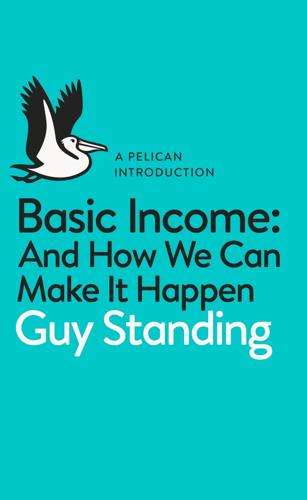
A Pelican Introduction: Basic Income
by
Guy Standing
Published 3 May 2017
, New York Times, Sunday Review, 20 March. 7. H. Koch and J. Quoos (2017), ‘Schwab: “Gewinner müssen mit Verlierern solidarisch sein” ’, Hamburger Abendblatt, 9 January. 8. S. Dadich (2016), ‘Barack Obama, neural nets, self-driving cars and the future of the world’, Wired, October. https://www.wired.com/2016/10/president-obama-mit-joi-ito-interview/. 9. The best general treatment is Caputo, Basic Income Guarantee and Politics. 10. V. Taylor et al. (2002), Report of the Commission on the Comprehensive Reform of Social Security. Cape Town: Department of Social Development, Government of South Africa. M. Samson and G. Standing (eds.) (2003), A Basic Income Grant for South Africa.

Blitzscaling: The Lightning-Fast Path to Building Massively Valuable Companies
by
Reid Hoffman
and
Chris Yeh
Published 14 Apr 2018
Many of the stories in the book come from the guests who appeared in Season 1 and Season 2, including Aneel Bhusri, Sara Blakely, Stewart Butterfield, Barry Diller, John Elkann, Caterina Fake, Tim Ferriss, Payal Kadakia, Nancy Lublin, Mark Pincus, Linda Rottenberg, Sheryl Sandberg, Howard Schultz, Peter Thiel, Tristan Walker, Ev Williams, and Mark Zuckerberg. Thanks also to those who made a cameo on those episodes, including Umber Ahmad, Dominique Ansel, Greg Baldwin, Alexa Christon, Paulette Mae Cole, Chris Costa, Lisa Curtis, Susan Danziger, Angela Duckworth, Kara Goldin, Natasha Hastings, Margaret Heffernan, Drew Houston, Joi Ito, Leila Janah, Daniel Kahneman, Cheryl Kellond, Dara Khosrowshahi, Josh Kopelman, Omid Kordestani, Michelle Lee, Tim Lefler, Kristen Marhaver, Kathryn Minshew, Andrew Ng, Aubrie Pagano, Hadi Partovi, Robert Pasin, Juliana Rotich, Andrés Ruzo, Dick Stockton, Tony Tjan, Yossi Vardi, and Darryl Woodson.

Free culture: how big media uses technology and the law to lock down culture and control creativity
by
Lawrence Lessig
Published 15 Nov 2004
I am particularly grateful to Catherine Crump and Harry Surden, who helped direct their research, and to Laura Lynch, who brilliantly managed the army that they assembled, and provided her own critical eye on much of this. Yuko Noguchi helped me to understand the laws of Japan as well as its culture. I am thankful to her, and to the many in Japan who helped me prepare this book: Joi Ito, Takayuki Matsutani, Naoto Misaki, Michihiro Sasaki, Hiromichi Tanaka, Hiroo Yamagata, and Yoshihiro Yonezawa. I am thankful as well as to Professor Nobuhiro Nakayama, and the Tokyo University Business Law Center, for giving me the chance to spend time in Japan, and to Tadashi Shiraishi and Kiyokazu Yamagami for their generous help while I was there.
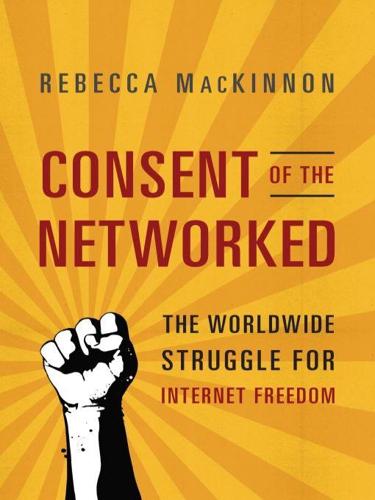
Consent of the Networked: The Worldwide Struggle for Internet Freedom
by
Rebecca MacKinnon
Published 31 Jan 2012
In 1979 my parents took my brother, Cyrus, and me to live in Beijing for two years, enrolling us in a Chinese primary school, so they could conduct research on a book. None of us realized at the time what a gift they had given their children. More than two decades later when I was working as a foreign correspondent in Tokyo, I met Joi Ito, who introduced me to blogs, catalyzing a chain of discoveries and friendships that ultimately propelled me away from conventional journalism and down the winding path I have taken. Adam Greenfield jolted me out of my TV reporter’s mind-set and challenged me to think in new dimensions. My dear friend and colleague Ethan Zuckerman has been a rock since we started collaborating in 2004, providing critical support and substantive advice as this project evolved.
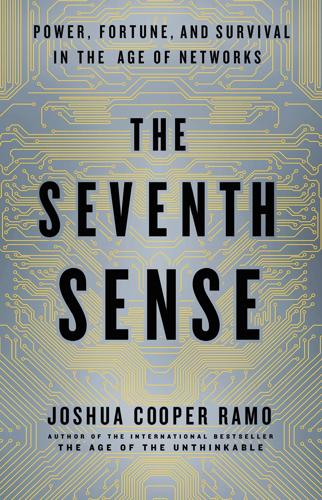
The Seventh Sense: Power, Fortune, and Survival in the Age of Networks
by
Joshua Cooper Ramo
Published 16 May 2016
I am fortunate to have friends who also helped me shape and refine the ideas in the book—through conversation and debate and then through careful reading. Jacob Weisberg’s dissection of an early draft of the book helped me tighten many of my ideas, and feedback from Bob Rubin, Fareed Zakaria, Jim Baker, and Gideon Rose also made me carefully consider any number of problems in the manuscript. Joi Ito and Reid Hoffman, philosophical brothers in arms, impressed their energy and optimism on my thinking. My friend Michelle Kydd Lee offered her sharp mind and warm heart throughout. Devon Spurgeon was a loyal, tireless supporter of the book’s ideas. Alicia Johnson and Hal Wolverton gave me great creative support and ideas.
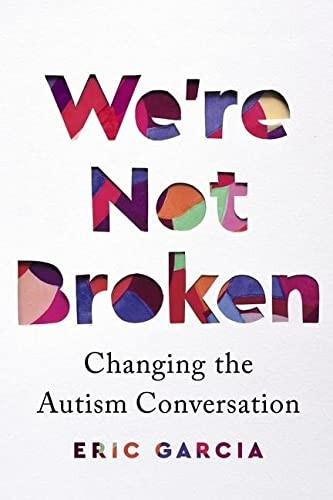
We're Not Broken: Changing the Autism Conversation
by
Eric Garcia
Published 2 Aug 2021
guest-edited an issue of Wired magazine: “President Obama Guest Edits Wired,” Wired, October 2016, https://www.wired.com/magazine/president-obama-guest-edits-wired/. “They might be on the spectrum”: Scott Dadich, “Barack Obama Talks AI, Robo Cars, and the Future of the World,” Wired, October 12, 2016, https://www.wired.com/2016/10/president-obama-mit-joi-ito-interview/. tweeted his support of Trump: Bob Wright, “Go Donald Trump. The Best Choice for All Republicans and All Americans!,” Twitter, April 18, 2016, https://twitter.com/bobwrightnbc/status/722223562900299778. tried to persuade Wright: Bob Wright and Dianne Mermigas, The Wright Stuff: From NBC to Autism Speaks (New York: Rosetta Books, 2016).
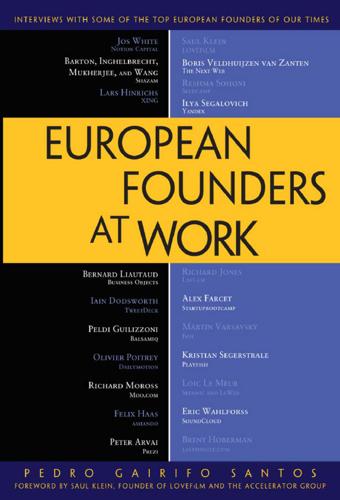
European Founders at Work
by
Pedro Gairifo Santos
Published 7 Nov 2011
If you can solve a problem by throwing a new server at it or spending, like, a month of programming, it's pretty obvious nowadays that you would just buy a new piece of hardware. But initially, at least, we were very focused on optimizing and making sure we got the most out of every server. Santos: But eventually, you did raise a Series A run from Index Ventures. Jones: We did, yeah. We had some angel investment before that too, from Stefan Glaenzer, Joi Ito and Reid Hoffman. Santos: So when did you decide to raise capital, and what steps did you take? Jones: Well, it was painfully obvious to us that we needed to raise some money, because we wanted to grow the service. The service was growing quickly on its own, naturally. If we just wanted to keep up with that pace, we would've had to have some investment to buy hardware, and data centers, and so on.

The Industries of the Future
by
Alec Ross
Published 2 Feb 2016
Citing the lack of a mechanism for high-value trusted transactions, Charlie adds, “Conversely, from 1995 to the present day there has been almost no impact by the Internet on the financial services or legal industries. The process of performing a wire transfer, opening a bank account, or setting up a will has remained unchanged.” Joi Ito, director of the MIT Media Lab, expands on this idea: “My hunch is that The Blockchain will be to banking, law and accountancy as The Internet was to media, commerce and advertising. It will lower costs, disintermediate many layers of business and reduce friction. As we know, one person’s friction is another person’s revenue.”

Smart Mobs: The Next Social Revolution
by
Howard Rheingold
Published 24 Dec 2011
Jennifer Swearingen is an author’s dream—the best copy editor I have encountered. Bryan Alexander, Timothy Burke, Charles Cameron, Peter Feltham, Gary Jones, Jim Lai, and Michael Wilson were the smartest, best-read, most candid online brain trust I could have hoped for. Joanna Lemola and Alex Nieminen in Helsinki; Mimi Ito, Joi Ito, and Justin Hall in Tokyo; Judith Donath in Cambridge; and Michael Thomsen in Stockholm were invaluable guides to emerging cultures in their parts of the world. Tim Pozar and Robert Heverly tutored me in the complexities of wireless technology and regulation. Lawrence Lessig alerted me to the attempt to enclose the Internet’s innovation commons.
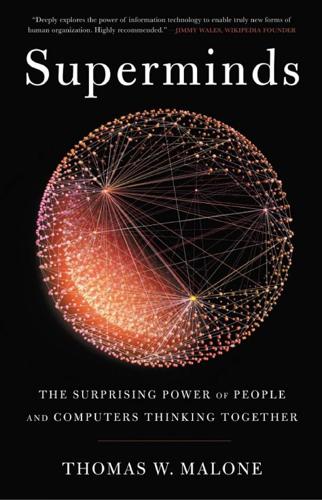
Superminds: The Surprising Power of People and Computers Thinking Together
by
Thomas W. Malone
Published 14 May 2018
I really love the premise and thoughtfulness of the book, and I highly recommend it if you want to understand and make sense of what we are likely to see in the next few years!” —Jimmy Wales, Wikipedia founder “From the father of collective intelligence, a refreshingly realistic view of how computers will supercharge collective intelligence and how these superminds can help us tackle the most complex problems that face the world today.” —Joi Ito, director of the MIT Media Lab “Thomas Malone was a decade ahead of most of the rest of us in thinking about the future of work. Now—in this fascinating book—he has done it again, looking ahead to a hyperconnected world and introducing us to new vistas of human capability and creativity achievable through collective intelligence.

A World Without Work: Technology, Automation, and How We Should Respond
by
Daniel Susskind
Published 14 Jan 2020
See Chris Rhodes, “Manufacturing: Statistics and Policy,” House of Commons Library Brief Paper No. 01942 (November 2018); Chris Payne and Gueorguie Vassilev, “House Satellite Account, UK: 2015 and 2016,” Office for National Statistics (October 2018). GVA of manufacturing sector in 2016 was £176bn; of “household housing services,” “nutrition,” “laundry,” and “child care,” £797.65bn. 66. Joi Ito and Scott Dadich, “Barack Obama, Neural Nets, Self-Driving Cars, and the Future of the World,” Wired, 12 October 2016. 67. Alex Moss, “Kellingley Mining Machines Buried in Last Deep Pit,” BBC News, 18 December 2015. 68. See, for instance, David Goodhart and Eric Kaufmann, “Why Culture Trumps Skills: Public Opinion on Immigration,” Policy Exchange, 28 January 2018. 69.

Deep Medicine: How Artificial Intelligence Can Make Healthcare Human Again
by
Eric Topol
Published 1 Jan 2019
By not preparing for current and future technological capabilities, we are setting up the failure of medicine’s future to restore humanism. It makes me think of the recent claim in China that an AI-powered robot—Xiaoyi—passed the national medical licensing examination for the first time. Are we selecting future doctors on a basis that can be simulated or exceeded by an AI bot? I share the view expressed by Joi Ito, who dropped out of college and is now a professor and the head of the MIT Media Lab. Ito said that if there were a system available all of the time that had all the information one needed to memorize to apply for medical school, “maybe there’s an argument to be made that you don’t have to memorize it.”
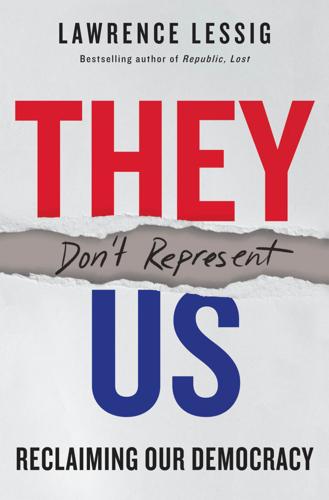
They Don't Represent Us: Reclaiming Our Democracy
by
Lawrence Lessig
Published 5 Nov 2019
Sarbanes “In classic Lessig fashion, this book connects one of society’s biggest challenges—the impact of technology on our society and democracy—to the evolution of our constitution to show how we’ve lost our voice in our system of government. But as the reader descends into a spiral of despair, he pulls them up with the hope of potential interventions that could successfully enact positive change.” —Joi Ito, Director, MIT Media Lab “Lessig eloquently advances his diagnosis of our democratic condition. He then helps us understand how remedies might be possible. A book of lasting importance.” —James Fishkin, author of Democracy When the People Are Thinking Also by Lawrence Lessig Republic, Lost: 2.0: The Corruption of Equality and the Steps to End It Republic, Lost: How Money Corrupts Congress—and a Plan to Stop It Remix: Making Art and Commerce Thrive in the Hybrid Economy Code: Version 2.0 Free Culture: How Big Media Uses Technology and the Law to Lock Down Culture and Control Creativity The Future of Ideas: The Fate of the Commons in a Connected World Code: And Other Laws of Cyberspace Copyright THEY DON’T REPRESENT US.

Transaction Man: The Rise of the Deal and the Decline of the American Dream
by
Nicholas Lemann
Published 9 Sep 2019
NETWORK MAN you might well wind up in Silicon Valley: General background and history about Silicon Valley comes from author’s interviews with Arthur Rock, Hal Varian, Laszlo Bock, AnnaLee Saxenian, Bob Metcalfe, Ben Rosen, Reid Hoffman, Thomas Perkins, John Doerr, John Lilly, David Sze, David Hahn, Michael Mandel, Joe Kraus, Josh Kopelman, Nancy Lublin, Joi Ito, Peter Thiel, Simon Rothman, George Arison, David Sanford, Mark Pincus, Jeff Weiner, Premal Shah, James Manyika, Evan Williams, Allen Blue, Ann Miurako, John Etchemendy, Mike Maples, Roy Bahat, Terry Winograd, Ian McCarthy, Jen Pahlka, Tim O’Reilly, Linda Rottenberg, Ben Casnocha, and Dan Portillo.
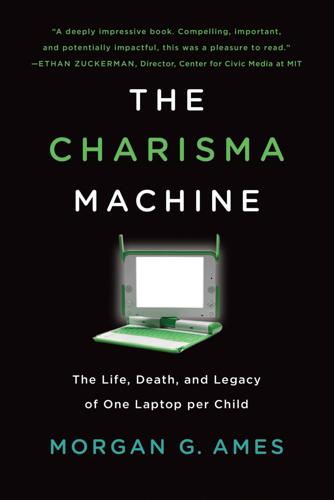
The Charisma Machine: The Life, Death, and Legacy of One Laptop Per Child
by
Morgan G. Ames
Published 19 Nov 2019
For the first twenty years of its existence, the MIT Media Lab’s credo was “Demo or Die,” and it was famous for such performances, as all groups housed in the lab were expected to have a demo on hand at all times for funder tours.18 I went on one such tour myself in 2013, as part of the Digital Media and Learning summer institute. Even though the Media Lab had shifted this credo to the more concrete “Deploy or Die” several years earlier under the leadership of Joi Ito, the flashy demonstrations that graduate students readily launched into throughout the lab showed that these were still at the core of the Media Lab visitor experience. One longtime Media Lab denizen joked that even the way Negroponte would take his time flipping through his notebook to “find a slot” for high-powered donors—whether accurate or not—was also charismatically performative, evoking a schedule that was packed with even more important figures.

The Coming Wave: Technology, Power, and the Twenty-First Century's Greatest Dilemma
by
Mustafa Suleyman
Published 4 Sep 2023
A huge thanks to Gregory Allen, Graham Allison (and the faculty and staff of Harvard’s Belfer Center more widely), Sahar Amer, Anne Applebaum, Julian Baker, Samantha Barber, Gabriella Blum, Nick Bostrom, Ian Bremmer, Erik Brynjolfsson, Ben Buchanan, Sarah Carter, Rewon Child, George Church, Richard Danzig, Jennifer Doudna, Alexandra Eitel, Maria Eitel, Henry Elkus, Kevin Esvelt, Jeremy Fleming, Jack Goldsmith, Al Gore, Tristan Harris, Zaid Hassan, Jordan Hoffman, Joi Ito, Ayana Elizabeth Johnson, Danny Kahneman, Angela Kane, Melanie Katzman, Henry Kissinger, Kevin Klyman, Heinrich Küttler, Eric Lander, Sean Legassick, Aitor Lewkowycz, Leon Marshall, Jason Matheny, Andrew McAfee, Greg McKelvey, Dimitri Mehlhorn, David Miliband, Martha Minow, Geoff Mulgan, Aza Raskin, Tobias Rees, Stuart Russell, Jeffrey Sachs, Eric Schmidt, Bruce Schneier, Marilyn Thompson, Mayo Thompson, Thomas Viney, Maria Vogelauer, Mark Walport, Morwenna White, Scott Young, and Jonathan Zittrain.

Tripping on Utopia: Margaret Mead, the Cold War, and the Troubled Birth of Psychedelic Science
by
Benjamin Breen
Published 16 Jan 2024
I also want to acknowledge the generosity of those who made themselves available for interviews conducted by phone, email, or Zoom—often during the height of the COVID-19 pandemic, when many other things were on their mind. I am profoundly grateful to: Howland Abramson, Eliot Aronson, Jeff Bridges, Lois Bateson, Nora Bateson, Jonathan Beecher, Yvan Beaussant, Susan Block, Jerry Brown, Ann Druyan, Gary Dufresne, Robert Forte, John Foster, Leo Goldberg, Jean Houston, Bob Houlihan, Joi Ito, Laurence Jarvik, Jeffrey Jarvik, Robert Janiger, Lisa Kornetsky, David Kornetsky, David Lipset, Steve Mahon, Michael Maccoby, Daniel Métraux, Eric Miles, Deborah Nightingale, Noah Oderberg, Phillip Oderberg, Forrest Robinson, Gary Stern, Rick Trout, Andrew Weil, Marianne Weltmann, and Irvin Yalom, and those who agreed to speak off the record.
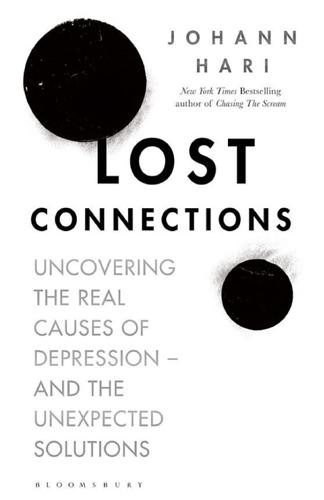
Lost Connections: Uncovering the Real Causes of Depression – and the Unexpected Solutions
by
Johann Hari
Published 1 Jan 2018
the key to a guaranteed income This case is also powerfully made in Nick Srnicek and Alex Williams, Inventing the Future: Postcapitalism and a World Without Work (London: Verso, 2015), 120–1. President Obama said it could happen in the next twenty years. https://www.wired.com/2016/10/president-obama-mit-joi-ito-interview/, as accessed December 12, 2016. He had been raised in a Catholic family in a homophobic culture Andrew describes a lot of this in his totally beautiful book Love Undetectable (London: Vintage, 2014). You don’t need me to fill in this list For a more comprehensive guide to how this works, I recommend two amazing books: Rebecca Solnit, Hope in the Dark: Untold Histories, Wild Possibilities (London: Canongate, 2016) and Paul Rogat Loeb, Soul of a Citizen: Living with Conviction in Challenging Times (New York: St Martin’s Press, 2010).
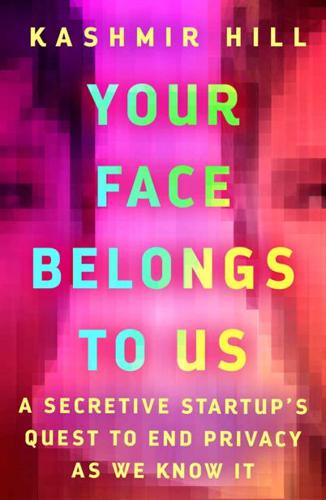
Your Face Belongs to Us: A Secretive Startup's Quest to End Privacy as We Know It
by
Kashmir Hill
Published 19 Sep 2023
GO TO NOTE REFERENCE IN TEXT the MIT Media Lab: In 2019, it was revealed that the Media Lab had accepted donations from the investor and convicted child sex offender Jeffrey Epstein. The deceased Minsky became part of the scandal after a victim of Epstein testified that she had been directed to have sex with the MIT professor when she was seventeen and Minsky was seventy-three. Joi Ito, “My Apology Regarding Jeffrey Epstein,” MIT, August 15, 2019, https://www.media.mit.edu/posts/my-apology-regarding-jeffrey-epstein/; Russell Brandom, “AI Pioneer Accused of Having Sex with Trafficking Victim on Jeffrey Epstein’s Island,” The Verge, August 9, 2019. GO TO NOTE REFERENCE IN TEXT “invent the future”: Edward Dolnick, “Inventing the Future,” New York Times, August 23, 1987.
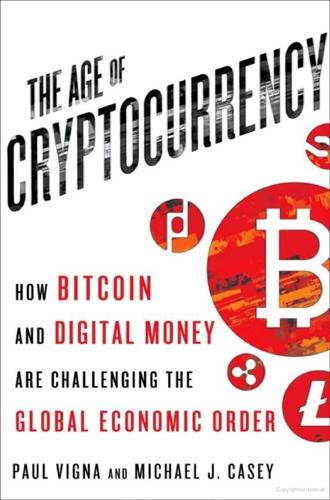
The Age of Cryptocurrency: How Bitcoin and Digital Money Are Challenging the Global Economic Order
by
Paul Vigna
and
Michael J. Casey
Published 27 Jan 2015
It occupies a spacious, modern space on the fourth floor of an office building that would be right at home in Silicon Valley, with lots of light, room for talks and presentations, couches and lounge space (including a foosball table), and a coffee bar. It also has work space for the people creating things, those who are driving the growth of Silicon Savannah. The place is wired, literally and figuratively, and filled with young, energetic, bright kids. They have meetups, and “fireside” chats, and attract heavy talent: Joi Ito, the director of the MIT Media Lab in Massachusetts, spoke at iHub in May 2014. Google’s Eric Schmidt also visited. The center’s goals are similar to those in Silicon Valley: to foster entrepreneurship, to build a network and get young people and young minds engaged and creating—one can almost hear Steve Jobs saying “magical”—things.
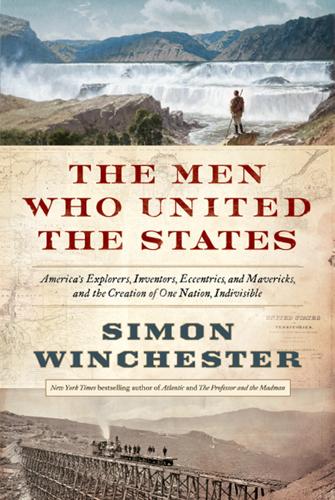
The Men Who United the States: America's Explorers, Inventors, Eccentrics and Mavericks, and the Creation of One Nation, Indivisible
by
Simon Winchester
Published 14 Oct 2013
(Courtesy of Stephen White) Nikola Tesla. (pd.) “PWA Rebuilds the Nation” poster. (Courtesy of David Rumsey Map Collection, www.davidrumsey.com) Reginald Fessenden and his transmitter lab. (pd.) Family grouped around a radio receiver. (Courtesy of Stephen White) Johnny Carson. (pd.) Joseph Licklider. (pd.) Vint Cerf. (Courtesy of Joi Ito, 2007) Robert Kahn. (pd.) Google server farm. (Photograph by Connie Zhou; courtesy of Google) AUTHOR’S NOTE On Independence Day, July 4, 2011, I swore a solemn oath before a federal judge on the afterdeck of the warship USS Constitution in Boston Harbor, and by doing so I became, after half a century of dreaming, a naturalized American citizen.
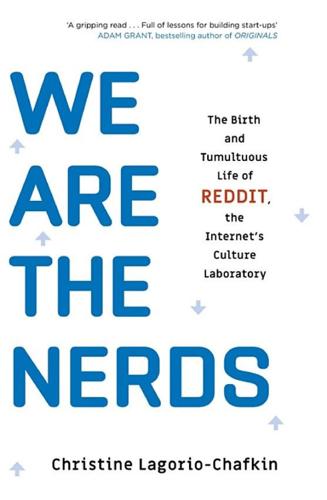
We Are the Nerds: The Birth and Tumultuous Life of Reddit, the Internet's Culture Laboratory
by
Christine Lagorio-Chafkin
Published 1 Oct 2018
The press was largely loving toward Swartz, the former teenage prodigy, a member of the Internet elite, the crusader for open access online. His friends and allies made glowing statements to journalists, and reiterated, as did his friend David Segal, the director of Demand Progress, that arresting Swartz after the indictment “makes no sense.” MIT Media Lab’s director, Joi Ito, petitioned the university to have Swartz’s case considered a “family matter,” and to remember that MIT’s policy was that anyone on campus could log into JSTOR or other library databases freely and easily. But the measure of indifference with which MIT had treated the entire endeavor of Swartz to this point, and its general culture of permissiveness toward technical pranks and pursuits, mattered little to U.S. attorney Carmen Ortiz.
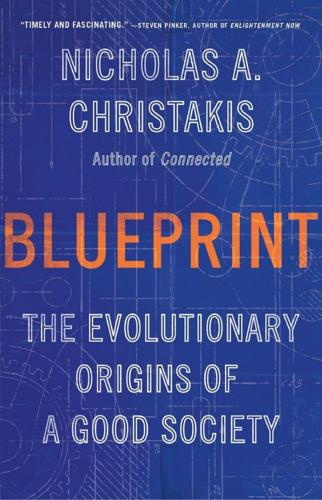
Blueprint: The Evolutionary Origins of a Good Society
by
Nicholas A. Christakis
Published 26 Mar 2019
—Marc Andreessen, cofounder of Andreessen Horowitz “In this provocative book, Christakis makes a thorough and compelling case that we are hardwired to value goodness in our societies—and thus innately compelled to participate in building, strengthening, and enhancing the common good. In an era marked by polarization and rising inequality, Christakis marshals science and history into a message of hope.” —Joi Ito, director of the MIT Media Lab “Blueprint is a brilliant and provocative tour de force that could not be more timely. I don’t think I’ve learned this much from a book in a long time. Christakis is the rare author who can combine rigor and erudition with page-turning readability. Filled with fascinating studies, including experiments from his own lab, Blueprint ultimately offers reason for hope grounded in science for our difficult times.”

The Stack: On Software and Sovereignty
by
Benjamin H. Bratton
Published 19 Feb 2016
It is interesting to note that the transposition of human labor into simple puzzle solving is taken by some as straightforward market efficiency and not as a transformation of humans into diminished automatons, whereas other Stack technologies that may ultimately allow for greater individual pleasure and safety are seen as affronts to the dignity of Creation. I recently heard Joi Ito, director of the MIT Media Lab say, “Google didn't just design a self-driving car. They designed a driver.” This focuses attention on the hardware-data-Cloud path dynamic that comes into play as the car navigates the City layer, partially or fully autonomous from human passenger intention. Among the most interesting features of what we call today the “driverless car” (“horseless carriage”) is how it decenters the agency and authority of the human pilot from the cockpit and disperses it into ambient networks operating at multiple scales.